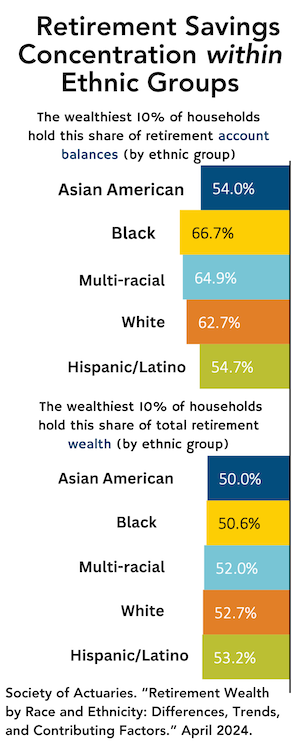
As people in the money biz know, financial advisors come in many flavors: Brokers, RIAs, fee-only, fee-based, dually licensed, etc. They differ in the way they’re paid and in the master they ultimately serve, whether it be a bank, their clients, or themselves.
In a presentation at The Wharton School last spring, fee-only planners Paula Hogan and Rick Miller showed that it’s also useful to think of advisors or planners in terms of the professional “paradigm” that they use, consciously or not, when working with their clients.
Advisors, they posit, use one of four paradigms. There’s the Traditional, the Life Cycle, the Behavioral (which tosses psychology into the mix) and what they call the “Advisor Experience” paradigm, where the advisor dons the robe of life counselor.
While most advisors are still Traditionals (i.e., who focus on accumulation-stage investment advice), the combined impact of the financial crisis, Boomer retirement, the advent of behavioral economics and fee compression is forcing more advisors to evolve beyond the traditional approach.
Which kind of advisor are you? Are you strictly a “numbers guy”? Or do your clients share their dreams and self-doubts with you, and rely on you to help them realize their most personal ambitions?
Below you’ll find descriptions of Miller and Hogan’s four paradigms, taken directly from the essay they presented at the conference on “The Market for Retirement Financial Advice” sponsored by the Wharton School’s Pension Research Council and Boettner Center for Pensions and Retirement Research in Philadelphia in May 2012. Maybe you’ll recognize yourself in one or two of them.
Traditional Paradigm (The advisor as technician)
- A planner steeped in the Traditional paradigm would focus on building a large portfolio using mainly the strategies of diversification and precautionary saving.
- Financial risk would be tailored to the client’s perceived risk tolerance.
- The Traditional advisor believes in the long-term safety of stocks, and typically recommends that clients “stay the course” in volatile markets.
- If the client has too little savings, the advisor might propose ramping up risk to make up for a shortfall. If the client has a surplus, a traditional advisor would also encourage the client to ramp up risk.
- To deal with longevity risk—the risk of outliving savings—the advisor would design a sustainable portfolio withdrawal program, most likely starting with a 4% per year withdrawal rate that rises with inflation each year thereafter.
- The withdrawal strategy could include a buffer of several years of cash reserves, smoothed withdrawal rates and/or withdrawal rates that are adjusted in response to market valuations.
- Long-term care insurance might be suggested as a complement to portfolio wealth.
Life Cycle Paradigm (The advisor as strategist)
- An advisor working from the life cycle point of view would add hedging and insuring to standard portfolio strategies in order to smooth consumption over a lifetime.
- He or she would insist on tailoring the risk of the financial portfolio to the risk in the client’s human capital in addition to the clients risk tolerance and personal goals. She would ask the client to specify the timing and cost and relative importance of various life goals.
- The Life Cycle advisor would be aiming, especially for the most important goals, to match assets and liabilities through some combination of TIPS ladders and immediate inflation-protected annuities. More aspirational goals would be funded by riskier investments strategies.
- The Life Cycle advisor will start showing which goals can’t be fully funded in the case of too little wealth. When there is ample wealth, the Life Cycle Advisor will show how big the client’s legacy will be, given his or her current standard of living. The Life Cycle advisor will also suggest working shorter, longer, or differently as a core strategy.
Behavioral Paradigm (The advisor as ‘framer’)
- The advisor coming from the behavioral point of view would want to arrange for portfolio guarantees in order to address the client’s presumed loss aversion. She would also work hard to correctly frame decisions about how much portfolio risk to take and how to view portfolio performances.
- The behavioral advisor would focus on annuitization strategies with downside protection guarantees paired with some upside potential, after sorting through the various biases of both the client and the advisor.
- Unless the client has a friend or relative who needed custodial care in old age, the behavioral advisor will address the client’s presumed “denial and/or implausible expectations about aging” before developing the appropriate financial strategy.
- The behavioral advisor will echo the Life Cycle ideas of changing the level of saving, risk taking, and work duration. To improve decision-making, he will also engage the client in a discussion designed to recheck the client’s values and her way of “framing” money issues. The advisor will ask questions like, “Are you sure there isn’t enough money for your well-being?”
Advisor Experience Paradigm (The advisor as life-coach)
- In the trenches of the Advisor Experience paradigm, much time would be spent at the outset agreeing upon which of the four paradigms is in play and also discovering and resetting any preconceptions the client might have about risk and return expectations and benchmarking.
- The Advisor Experience advisor will be ready with the strategies of changing the levels of saving, spending, working, and risk taking but will start with a values discussion. The client will be urged to ask him or herself: What do I care about and value? Where do I find meaning and purpose? What are my money values? How can I align meaning and purpose with money habits? How do I bring about the personal change that I desire?
- Implementation of the plan will be a personally developed action plan of measured small-step progress.
- The Advisor Experience advisor has multiple roles, including counselor, information resource, technical expert, cheerleader, accountability figure and healer.
Advisors, of course, are free to choose which paradigm they want to follow. But Hogan (left) and Miller make it clear that every client relationship involves behavioral and emotional elements, whether the advisors decide to deal with them or not. To ignore them entirely would be to risk leaving part of the job undone, or perhaps even doing it badly.
 The authors don’t appear to favor one paradigm over another, but they imply that as advisors grow in sophistication and experience, they’re likely to graduate from the Traditional to the Life Cycle paradigm and then, depending on their own preference or level of interpersonal skill, to the Behavioral and Advisor Experience paradigms.
The authors don’t appear to favor one paradigm over another, but they imply that as advisors grow in sophistication and experience, they’re likely to graduate from the Traditional to the Life Cycle paradigm and then, depending on their own preference or level of interpersonal skill, to the Behavioral and Advisor Experience paradigms.
It’s no coincidence that this sort of self-examination is happening now in the advisor community. The financial crisis, the migration toward fee-based compensation, the arrival of the Boomer retirement phenomenon, along with need for individuals to take more responsibility for protecting themselves from health, sequence of returns, and longevity risks, are all pushing Traditional advisors toward the Life Cycle model, the two advisors told RIJ in a recent interview.
“The reason you’re seeing so much emphasis on this now is that people are living longer, and they’re more responsible for financing a longer life,” said Hogan, who is based in Milwaukee. “Their money has to last for a long time,” Hogan said.
Miller (right), whose firm, Sensible Financial, is based near Boston, agreed. “The Life Cycle model is just beginning to make in-roads in the profession. More advisors are recognizing its importance. The next wave is going to involve behavioral economics. Advisors are beginning to talk about that, but we’re not applying it in a systematic way.”
 A retirement income-oriented advisor, almost by definition, has to adopt the Life Cycle paradigm, which emphasizes risk management, goal-setting, and asset-liability matching, as well as a greater awareness of the erosion of purchasing power by inflation over a long retirement.
A retirement income-oriented advisor, almost by definition, has to adopt the Life Cycle paradigm, which emphasizes risk management, goal-setting, and asset-liability matching, as well as a greater awareness of the erosion of purchasing power by inflation over a long retirement.
“Where 10-year Treasuries have been thought of as the safe asset in Modern Portfolio Theory, the life-cycle perspective would suggest that the safe asset would be TIPS,” Miller added. “Secondly, if you think about your future retirement expenses as a liability, one way to fund that liability would be to use single premium annuity that’s indexed to inflation.”
The evolution from one paradigm to another implies an evolution in compensation models as well. Miller and Hogan don’t address that issue in their essay, but Miller commented on it during an interview. As advisors expand their services beyond product sales and even beyond asset management, they may need forms of compensation other than commissions or asset-based fees.
“It’s useful to think of financial advice as a professional service,” he told RIJ. “So you would expect to see the compensation systems that you see in other professions, such as hourly rates or retainers, and less compensation that’s linked to transactions, and potentially even less linked to assets.”
© 2012 RIJ Publishing LLC. All rights reserved.


